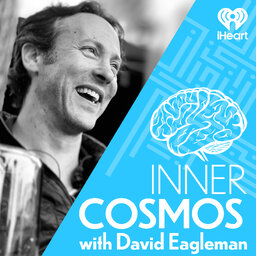Ep2 "What would you do with robotic wings? (or How to get a better body)"
How is it possible for a dog to become a champion surfer? Why does the world’s best archer have no arms? Why might someone come to believe that her leg doesn’t belong to her? How can we build robots that simply figure themselves out? In this episode, Eagleman unmasks mysteries about the brain's shocking flexibility -- revealing how it comes to drive whatever body it finds itself in, how it determines what the "self" is, and what this tells us about our future as humans.
 Inner Cosmos with David Eagleman
Inner Cosmos with David Eagleman


